Teller Cash Recyclers
The Ultimate Guide for Efficient, Experience-Driven
Financial Institutions
TAKE A COPY WITH YOU
What Is a Teller Cash Recycler + Why It’s More Relevant Than Ever?
A teller cash recycler (TCR) is a machine that automates how your branch handles physical cash. It authenticates, counts, stores, and dispenses bills securely and consistently—so your people don’t have to spend their time on what a machine can do better.
That might sound like a nice-to-have until you look at what branches are dealing with in 2025.
Staffing is tight. Labor is expensive. Compliance isn’t getting any easier. And customers still expect fast, frictionless service—on their schedule, in their channel, with zero room for error. Meanwhile, you’re trying to keep everything running with fewer people, tighter margins, and higher expectations across the board.
That’s the reality financial institutions are working inside. And that’s why TCRs are more relevant than ever.
Because the real conversation isn’t about counting cash faster. It’s about using automation to reduce friction in the branch, so your staff can stay focused on what actually moves the needle: compliance, customer engagement, and sustainable efficiency.
Over the rest of this guide, we’ll unpack what a modern TCR does, the business case behind it, and what it takes to get the rollout right. You’ll also get a clear view of what to look for in a TCR partner, how to avoid the common pitfalls we’ve seen firsthand, and what questions are worth asking before you make a decision.
Let’s get into it.

Start Learning Here
-
Teller Cash Recyclers of Yesterday vs. Today
-
Challenges in Today’s Branches That TCRs Help Solve
-
How TCRs Actually Work in a Branch (+ Why It Matters)
-
TCR ROI: The Financial Case for Automation
-
Staff Adoption and Onboarding: Managing the People Side of Change
-
Where TCRs Fit in Your Branch Strategy
-
Integration and Technology: Middleware, Core Systems, and Future-Proofing
-
Is a TCR the Right Fit for Your Financial Institution?
-
Choosing a TCR Partner: Why QDS
-
If You’re Thinking About TCRs, Let’s Talk
Teller Cash Recyclers of Yesterday vs. Today
If you’ve had a bad experience with TCRs in the past, you’re not alone.
We hear it all the time: “Yeah, we tried those a few years ago… didn’t love it.” And, quite frankly, we understand.
A lot of those early machines weren’t great. You were dealing with roll storage, limited capacity, slower speeds, and frankly, machines that just didn’t do what they said they were going to do. Add to that some half-baked integrations (e.g., screen scraping instead of real connectivity) and you end up with a setup that’s more frustrating than helpful. You probably had to staff around the machine because you couldn’t trust it to keep up. That’s not “increased operational efficiency.” All you’ve accomplished is shifting the problem.
In some cases, there’s a chance it was less about the hardware itself and more about the partner you relied upon to achieve TCR success. Maybe the vendor didn’t understand your environment. Maybe they oversold what the device could do, or disappeared when your team had questions. We've seen situations where the technology itself had potential, but it was completely undermined by a bad install, poor training, or just the wrong fit for your branch model. That kind of experience sticks with people, and who could blame you?
So if that’s where your head goes when someone brings up TCRs, we hear you. But a lot has changed in the world of TCRs, so it may be time for you to take a second look.
Good News: TCR Technology Has Grown Up
Today’s teller cash recyclers are a different animal altogether.
We’ve moved way past the days of roll storage and screen scraping. Today’s TCRs (especially cassette-based units) are faster, smarter, and built to actually fit your branch environment, not fight against it. The technology has matured, and so have the integration options.
But let’s get specific on what we mean by “matured,” and what you’re looking at with modern TCR technology:
-
More capacity to handle real volumes without constantly running back and forth to the vault.
-
Faster throughput that actually helps you move the line, not slow it down.
-
Continuous feed options, which means no more jamming bills in one at a time.
-
And most importantly, true integration. That’s right, we’re not screen-scraping anymore. These systems are built to talk to your teller platform the way they should.
But improvements aren’t limited to the TCRs themselves, it’s the whole ecosystem around them. You’ve got more vendors in the space now, which means more competition. That’s driven down costs and forced everyone to level up their game when it comes to support and service. So not only are you getting better equipment, you’re getting a better overall experience, assuming you’re working with the right people.
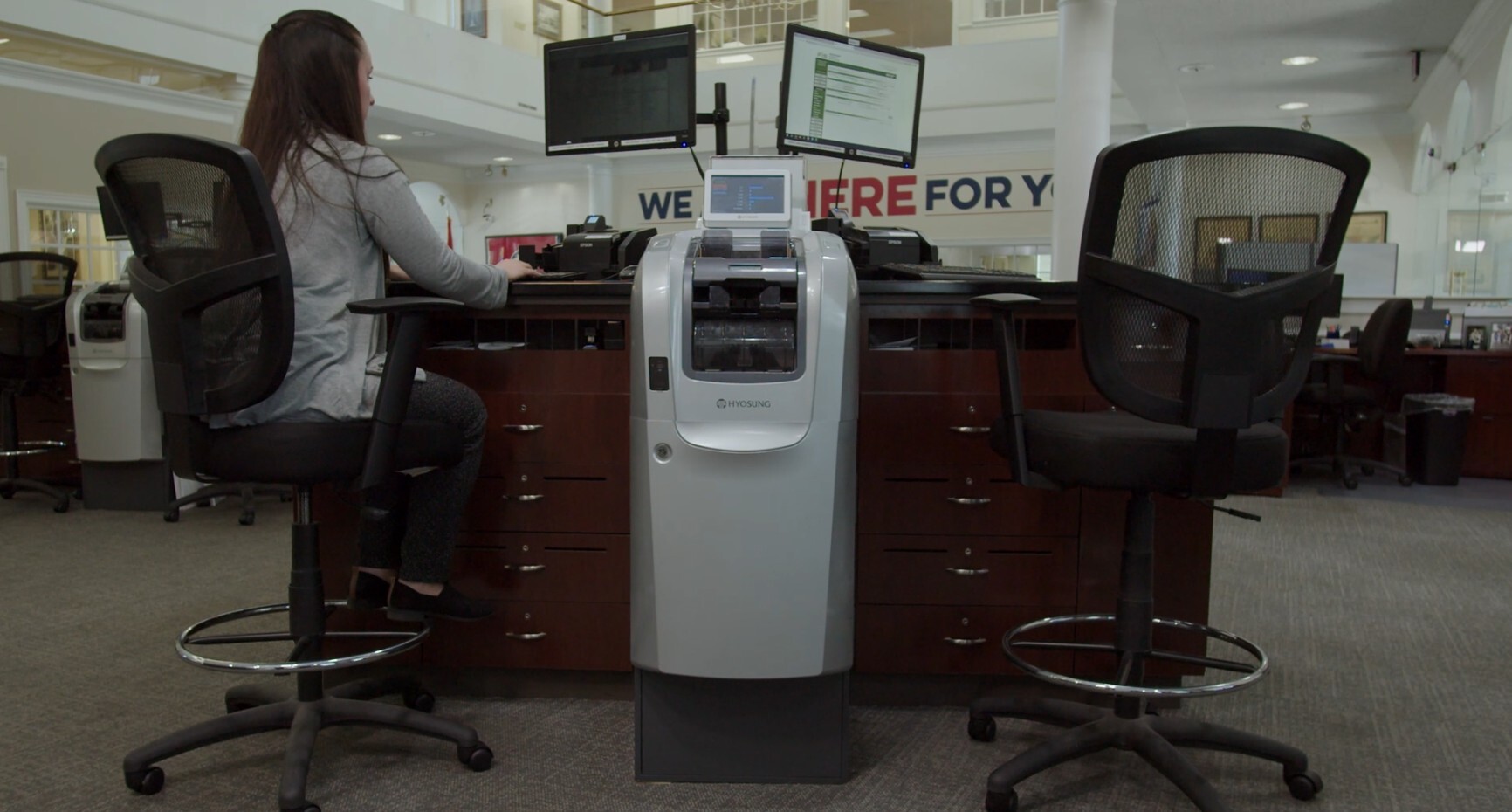
Integration Isn’t an Afterthought Anymore
One of the biggest leaps forward in TCRs is in how they actually connect to the rest of your ecosystem.
If you’ve been around this industry for a while, you probably remember when integration meant screen-scraping. And let me tell you, that stuff was brittle. One update, one slight change in your teller platform, and the whole thing fell apart. Your IT team was constantly patching around it. It was duct tape. It was fragile. And it was frustrating.
Now? We've got middleware.
That word gets thrown around a lot, but what does that really mean? You don’t have to blow up your entire tech stack just to get a TCR to talk to your core. You can keep your environment stable. You can adopt automation without waiting for your core provider to catch up. And when you do change cores down the road, you don’t lose the value of the investment you already made.
Middleware is what allows us to say, “Yes, we can do this now,” not in 18 months.
This is a game-changer for both your teller staff and your IT department. They don’t have to babysit the integration. They don’t have to manage workarounds. They’re not on the phone every month with two vendors pointing fingers at each other. They can step out of the weeds and focus on real priorities.
Because in 2025, your TCR shouldn’t need a disclaimer that says:
“Just don’t touch it, too hard.”
More Vendors, Better Support, Smarter Options
One of the biggest shifts we’ve seen over the last few years is in the vendor landscape. Back in the day, you didn’t have a lot of options. And frankly, some of the big players knew it. There wasn’t a ton of incentive to improve the tech or the support model. You’d get a box dropped off and maybe a phone number to call… good luck after that.
Today, that’s changed. You’ve got more choice in the market, and that’s been a really good thing. There’s more competition now, which means pricing is more aggressive, sure. But more importantly, the service side has gotten better too. Partners know they can’t just show up, install a TCR, and disappear.
Now you’ve got teams that actually understand teller workflows. They train your people. They help you rethink how cash moves through the branch. They stick around after go-live. And they’ve built systems that integrate cleanly with the tools you already use—so you’re not stuck in the middle of a tug-of-war between your TCR and your core provider.
That’s a totally different experience than what most people had with their first TCR install. And it’s a big part of why we’re seeing institutions come back around and take another look. You’re not buying a piece of hardware anymore. You’re investing in workflow. And that’s a conversation worth having.
Of Course, Sometimes the Partner Was the Issue
Earlier, we promised we’d talk about something that doesn’t get said enough: when TCRs fail, sometimes it’s not because of the machine. It’s because of the partner behind it.
We’ve talked to a lot of financial institution leaders like you who are understandably skeptical of TCRs. When you ask them what went wrong, it usually sounds like this:
“The thing never worked right. My team hated it. It caused more problems than it solved.”
That’s not nothing. When you invest in automation, you’re expecting less friction, not more. You’re trying to create consistency, not chaos.
But what we’ve seen time and again is that it’s rarely the technology that fails on its own. It’s a partner who didn’t take the time to get it right.
Maybe you’ve lived that. Maybe you had a vendor that was more interested in pushing hardware than helping your team succeed. Maybe they didn’t understand your workflow. Maybe they dropped off the machine, gave you a login, and walked out the door.
We’ve walked into those situations. And we’ve seen what happens when no one explains the why behind the machine, just the what. Your tellers don’t trust it. Your managers start working around it. Your leadership starts second-guessing the investment. And all of a sudden, the whole thing gets labeled a failure. Not because it couldn’t work, but because nobody showed up the right way to make it work.
The truth is, the quality of the partner you choose for a TCR solution is everything. They need to understand more than the device. They need to understand your people. Your pain points. The way your branches actually run. They need to care enough to ask questions, and experienced enough to know which ones matter.
It’s the same way you choose a contractor for your home. If a contractor show up with excuses, poor follow-through, and no pride in what they do, it doesn’t matter how expensive the tools are. You’re still going to end up with a job half done.
That’s why if your last go-round with TCRs left a bad taste, I’d ask you to consider this: was it the tech that didn’t work? Or was it the partner who failed to deliver?
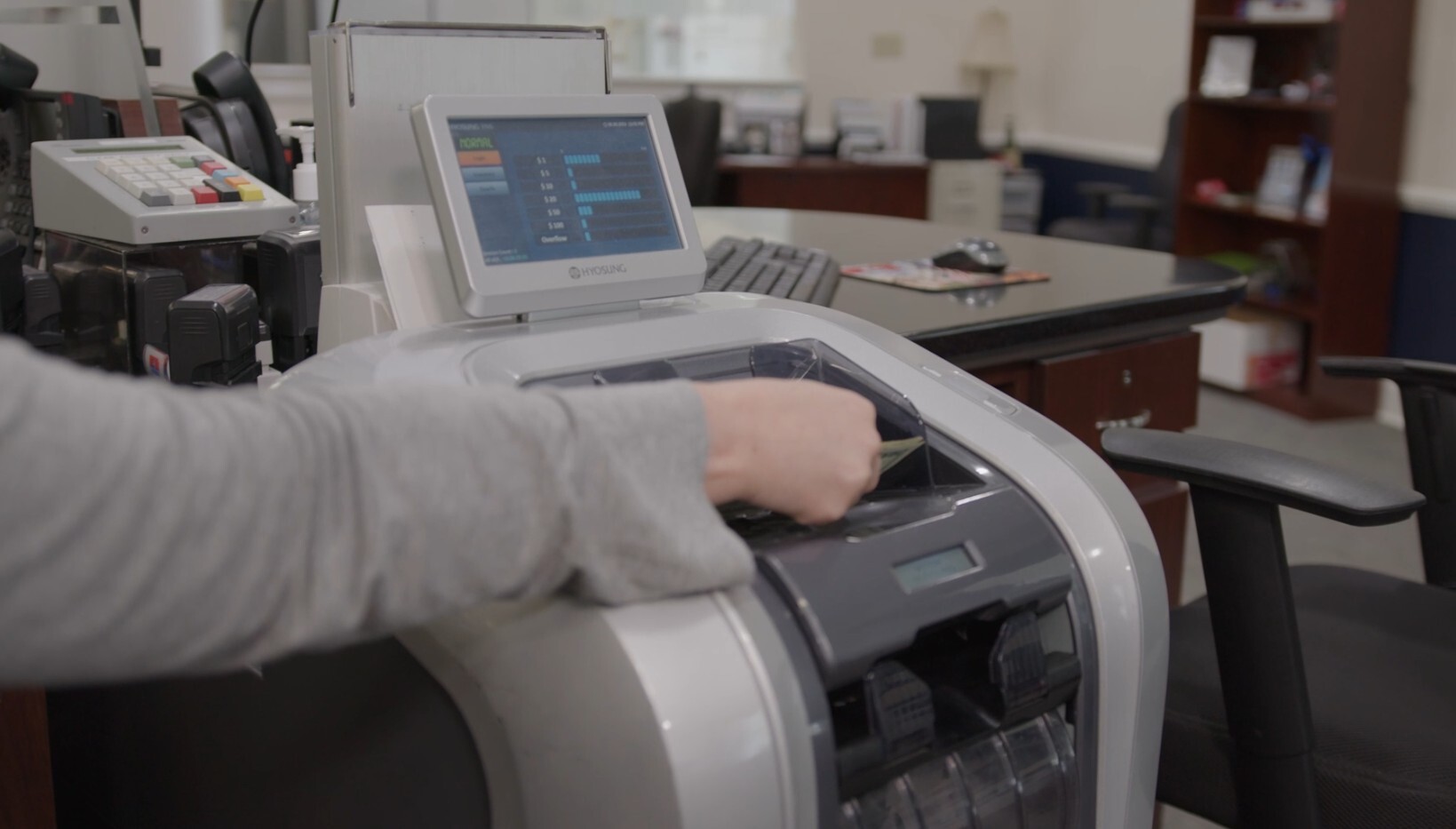
Challenges in Today’s Branches That TCRs Help Solve
Running a branch in 2025 isn’t for the faint of heart.
Staffing is a challenge. You’ve got a talent pool that’s harder to hire, harder to retain, and more expensive than ever. Compliance isn’t getting any simpler. And customers? They still expect fast, personal service. Only now they want it on their terms, in their timeframe, with zero tolerance for friction.
Meanwhile, you’re trying to stretch every dollar, every FTE, and every minute in the day.
This is the environment we’re all operating in, and it’s exactly the environment where TCRs start to earn their keep. Because what these machines actually do is eliminate the friction in the stuff that should be running on autopilot, so your people can stay focused on what actually moves the needle.
Let’s get into the details.
1. Labor Costs That Keep Climbing
Let’s start with the math. A typical frontline teller (with benefits) is going to run you $40,000 to $50,000 a year. A TCR? Around $10,000 to $12,000 a year, fully depreciated.
So even if you’re not reducing headcount, if you’re able to avoid hiring that next FTE (or reallocate someone who’s leaving) you’re instantly saving tens of thousands of dollars per branch. Across five branches, that’s real bottom-line impact.
Two tellers with a recycler can often do the work of three, because they’re not buried in counting, recounting, and balancing.
2. Vault Headaches and Dual Control Drain
In a lot of branches, the vault is still the hidden time thief. I’ve been in locations doing 30 vault buys or sells a day. That’s two staff members off the line every time; your best people, walking back and forth, just to move cash behind a door.
TCRs drop that to one or two vault trips a week. Not an exaggeration. That’s hours back to your frontline team, and fewer interruptions in your customer service flow. It also reduces risk. Fewer handoffs. Fewer compliance events. Less dual control chaos.
3. Staff Turnover and Training Fatigue
Turnover is real. It’s constant. And it’s expensive. Especially when the work itself feels like a grind, constant manual balancing, error corrections, and the stress of being off by a few bucks at the end of the day. Then your tellers are burned out before they’re even ramped up.
TCRs cut that down dramatically. You’re not just automating cash—you’re giving your team a break from the most mentally taxing parts of the job. And when your team isn’t running on fumes, they stay longer—and deliver better service.
4. Operational Inefficiencies That Compound
Manual tasks slow everything down. It’s not just about counting, it’s about recounting, reconciling, and tracking down drawer discrepancies. All that time adds up, and it’s time your team should be spending with customers.
TCRs let your staff focus on higher-value activities. They help you smooth out transaction peaks and valleys, so you’re not overstaffing for Fridays and standing around on Tuesdays.
5. Transactional Interactions vs. Relationship Banking
Every time your teller’s eyes are on a strap of $20s instead of the person in front of them, you’re missing a moment that matters. TCRs reduce the mechanical parts of the interaction, so your staff can actually be present. Make eye contact. Ask a good question. Remember someone’s name. That’s what builds loyalty, not faster drawers.
And when those moments start stacking up (when customers feel seen and not processed), that’s where trust is built. That’s what keeps people coming back.
6. Layout and Flexibility Constraints
When your branch layout separates platform staff from tellers (or when the vault’s on the other side of the building), you’re spending square footage and energy on inefficiency. TCRs unlock layout flexibility. You can consolidate roles, reduce traffic to and from the vault, and create a more collaborative frontline without needing to redesign your whole footprint.
Especially in smaller or hybrid branches, it lets you adapt your physical space to your staffing model, rather than the other way around.
7. Security and Compliance Exposure
Every manual cash handoff is a liability. Every vault trip is a compliance event. Every drawer discrepancy is a potential audit issue. TCRs help close those gaps. They authenticate bills in real time, reduce cash touches, and generate a full audit trail. They’re accurate and consistent, and that consistency builds trust on both sides of the glass.
For institutions under pressure to meet ever-tightening regulatory expectations, this kind of built-in safeguard is necessary.
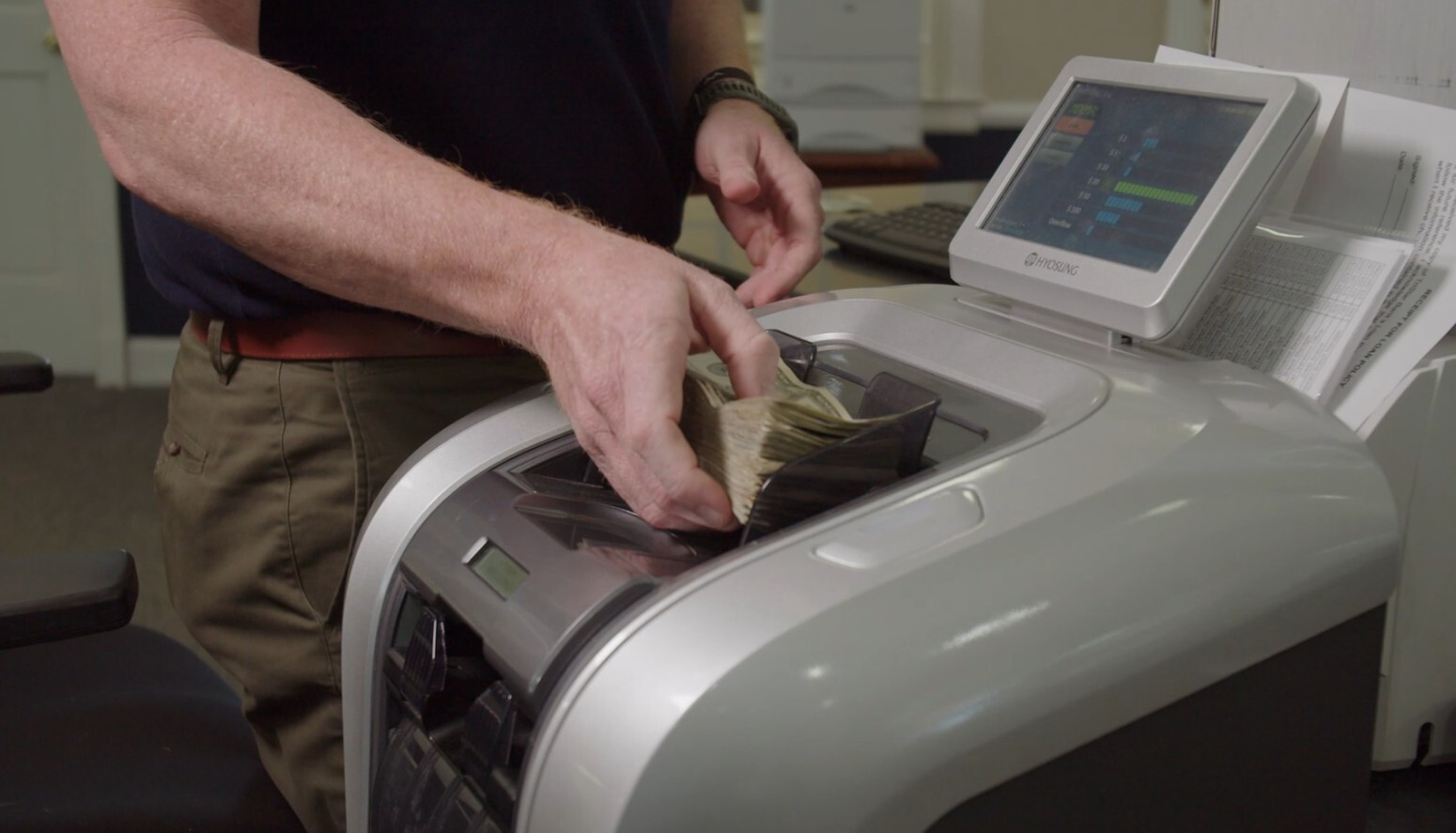
How TCRs Actually Work in a Branch (+ Why It Matters)
We’ve talked about ROI, staffing impact, and strategic value, but how does a TCR actually work once it’s on the floor?
This is where a lot of people overthink it. We get questions about whether it’s going to replace staff or change someone’s job. And look, we get it. If you’re a teller hearing about this for the first time, your first thought might be, “Is this thing here to replace me?”
That fear is real. It’s job preservation. It’s “what does this mean for me?” Especially if they’ve never worked with one before or had a bad experience with older equipment. We see that a lot, and we take it seriously.
But the reality is, the TCR is there to take pressure off your people. Not to take away their role. When it’s working right, it eliminates the part of the job nobody really enjoys—constant counting, back-and-forth to the vault, end-of-day balancing stress. And when your team starts to feel that shift, it changes how they show up.
They go from “What is this thing?” to “This is Bobby.” We’ve literally had branches name their TCRs, dress them up for Halloween, and decorate them for the holidays. What was once something staff feared or resisted is now a cherished member of their team.
What the TCR Replaces (And What It Doesn’t)
In order to understand how a TCR is placed in your branch, we need to talk about this first. While staff optimization may be a consideration, a TCR doesn’t replace your best people. It replaces the repetitive manual work they shouldn’t be doing in the first place.
Think about the old way. You’ve got tellers standing at the line, counting cash, strapping bills, doing vault buys and sells. You’ve got dual control kicking in, which means you’re pulling another person off the line every time you move money in or out of the vault. And the whole time, the customer’s just standing there, waiting.
The TCR takes all of that and automates it. It replaces older tools like cash dispensers or roll storage machines that were clunky, limited, or couldn’t accept deposits. It helps move cash securely, quickly, and consistently, while also freeing your staff up to stay focused on the people in front of them.
What it doesn’t do is eliminate the need for good employees. You still need people at the counter who know how to build trust, answer questions, and spot opportunities. The TCR just clears the path so they can actually do that work.
Where It Sits, How It Connects, and What It Does
The TCR connects directly to the teller’s environment. It works with your cash drawer. It connects to your platform. And it becomes part of your daily vault process. This isn’t a bolt-on. It’s fully integrated into how your team works.
It’s also a closed loop. That matters. When cash goes in, it’s secure. When it comes out, it’s traceable. You’re not walking stacks of twenties across the lobby or laying deposits on a counter in view of customers. Whether it’s a high-volume deposit from a commercial client or a standard withdrawal at the window, the TCR is managing it behind the scenes without turning the branch into a circus.
And the reason it works is because it’s consistent. It doesn’t blink. It doesn’t get distracted. It just handles cash the same way every time. When it’s in the right spot and integrated correctly, it becomes a quiet part of the team. Not the star. Not the center of attention. But the piece that keeps everything moving the way it should.
What a Teller’s Day Looks Like Post-TCR
The day starts off the same way… but it moves a whole lot smoother.
Tellers spend less time doing the mechanical stuff. Cash goes into the machine. The machine counts it, sorts it, and logs it. If there’s a jam, they know how to clear it. If there’s a dispute, they’ve been trained on how to handle it. Closeout at the end of the day takes minutes, not half an hour.
Instead of stressing over whether their drawer balances to the penny, they’re engaging with the customer. Making eye contact. Asking questions. Even looking at account profiles and spotting cross-sell opportunities.
And maybe most importantly—they’re walking out the door on time. They’re not staying late trying to hunt down a cash discrepancy. They’re not worried about making an honest mistake that could cost them their job. That stress comes off their shoulders. And you can feel that shift in the branch when it happens.

Culture Shift: When a Machine Becomes Part of the Team
When a TCR is rolled out the right way, you start to feel the difference, not just in the workflow, but in the culture. This matters, because where a TCR is placed inside your culture is equally important as where it’s placed physically.
Like we shared at the start of this section, we’ve seen branches we work with name their TCR, because they genuinely view this piece of hardware as a valuable member of their team. One of our support tickets literally came in that said, “Bobby’s not feeling well today. Can you come take a look?”
That might sound silly, but it tells you something important. It tells you the team has accepted the machine. They’ve welcomed it into the flow. They don’t see it as a threat. They see it as part of how they get their job done well.
That kind of buy-in doesn’t happen by accident. It happens because your staff sees that the TCR makes their job easier. It helps them balance faster. It cuts down on stress. And it gives them the space to focus on what they’re actually good at, which is building relationships and delivering a great experience.
When that switch flips, the whole branch runs better. And everyone feels it.
How do you get to that point where you’re overcoming staff resistance? Don’t worry, we’ll answer that question in a later chapter.
TCR ROI: The Financial Case for Automation
Let’s break this down the way your CFO would want to see it.
Most financial institutions, when they start exploring teller cash recyclers, focus on the sticker price: “Isn’t that a $30,000 to $40,000 machine?” And yes, that’s the ballpark for capital costs, depending on the model and install. But that’s not the number that matters.
The real question is: What does this cost you per year to operate, and what do you save by not hiring another person?
Once you account for depreciation and maintenance, most financial institutions end up spending somewhere between $10,000 and $12,000 per year per TCR. That’s the number you should be using when you compare against labor costs. And frankly, you can’t hire a part-time teller for that. Not with benefits. Not even close.
So What Do You Save with TCRs, Really?
Let’s say you’ve got a branch with four tellers. If one of those positions turns over (and you don’t rehire because the TCR absorbs that workload), you’ve just saved $30,000 to $40,000 a year. That’s not “soft ROI.” That’s cash you don’t have to spend anymore.
Multiply that by five branches, and that’s $100K back to your bottom line. Every year.
This is how our clients justify the investment. Not because it’s “cool,” but because it helps them manage staffing gaps, reduce turnover stress, and reallocate team members toward more strategic roles.
This Isn’t Headcount Reduction, It’s Resource Reallocation
Let’s be clear, TCRs don’t have to mean layoffs. But they absolutely allow you to do more with the team you already have. You don’t need to overstaff just to cover the closeout. You don’t need to scramble when someone calls in. You’re not burning out your most dependable people counting the same drawer five times in a row.
It’s about building capacity without expanding payroll. And in this market, that’s a win.
Your TCR Can Be a Budget Strategy
A TCR can be a way to unlock budget in a department that rarely gets credit for driving efficiency. Most of our clients don’t fund this through capex. They cover it through FTE savings, or they carve it out of non-interest expense by reframing the conversation.
Rather than asking, “Do we have money for a TCR?”
You’re asking, “Do we have people we won’t need to rehire if we make this move?”
And if the answer is yes, you’ve got budget.
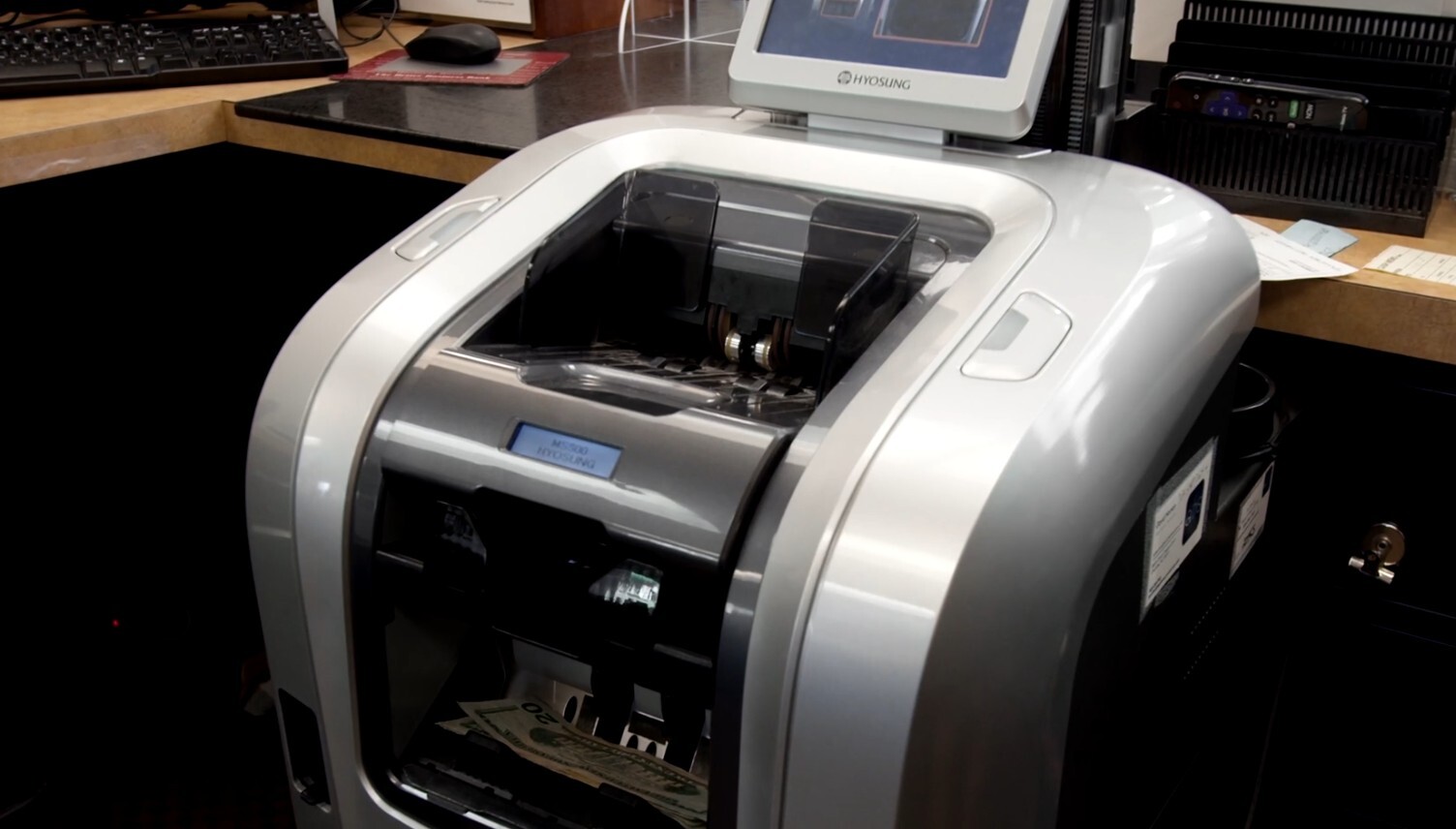
What Else Are You Saving? (Hint: It’s Not Just Payroll)
Labor efficiency is the big one, but it’s not the only one.
Let’s talk about what you’re not spending anymore once a TCR is doing its job.
-
Overtime. When your team’s stuck on the line late balancing drawers, doing recounts, or finishing vault buys at closing time, those minutes add up—and they come with a premium. A TCR takes that chaos out of the equation. It automates the closeout, cuts down balancing time, and makes the end-of-day routine a whole lot less stressful.
-
Cash discrepancies. When people are manually counting stacks all day long, mistakes happen. It’s not always intentional. It’s usually fatigue, distractions, or human error. We’ve seen clients reduce balancing issues by more than half, just because the TCR never miscounts, never gets tired, and never guesses.
-
Counterfeit risk. You’d be surprised how often a fake bill slips through because someone was rushed or distracted. I’ve seen branches eat thousands of dollars in “For Motion Picture Use Only” notes because someone didn’t catch them in time. A TCR flags that instantly. That’s not just a savings line item—that’s a layer of protection for your team.
-
Turnover-related waste. Rehiring is expensive. Training takes time. And when someone leaves because they’re burned out from manual balancing or constantly being pulled away for vault runs? That’s a preventable cost. TCRs take pressure off your staff—especially your best performers—so they’re not stuck doing low-value work all day.
With a TCR, you’re investing in consistency, scalability, and stability.
You’re buying the ability to not scramble when someone quits. To not worry if a new hire can balance a drawer under pressure, or burn hours counting money when your customers need actual service. That’s what makes this such a smart investment. While your team is out building relationships, your TCR is in the background doing exactly what it’s supposed to, every single time.
Staff Adoption and Onboarding: Managing the People Side of Change
If you’ve read this far, you already know what the machine can do. But none of it matters if your staff won’t use it.
TCRs are only as valuable as the people using them day in and day out. And when we walk into a new branch (especially one that's never had a TCR before), we know there are going to be questions. We know there’s going to be hesitation. That’s not a surprise. That’s normal. Remember, even when the change you want to introduce is a positive one (like the TCR), there’s a good chance this change may be viewed as a disruption by your branch staff.
Maybe it’s fear around job security. Maybe they’ve used an older model that didn’t work right. Or maybe they’ve just never worked with automation before and they’re wondering, “What does this change for me?”
That’s why onboarding isn’t something we treat like a box to check. It’s the core of what makes a TCR rollout work.
TCR Rollouts That Build Confidence
Every TCR implementation we do starts with one goal: get your staff comfortable, confident, and ready to use the machine right away. We’ve seen what happens when people are left to figure it out on their own. They avoid the machine. They fall back on old habits. And all that potential you invested in? It just sits there.
That’s why we send experienced people onsite (typically for a day and a half to two and a half days) to walk through the whole process alongside your team. No guesswork. No confusion. Just hands-on support from people who speak GL, understand teller workflow, and know how to build confidence fast.
We walk them through everything. Not just how to run a transaction, but how to:
-
Handle end-of-day balancing (which usually gets 15 to 20 minutes per person back)
-
Clear a jam when it happens
-
Resolve a customer dispute if the cash count feels off
-
Run a self-audit confidently
-
Use the transit cassette effectively
It’s one thing to have a machine in the room. It’s another thing entirely to have a team that actually knows how to use it, trusts what it’s doing, and sees it as a tool that helps them do their job better.
That’s where adoption happens, and that’s where the results start to show up.
This Is Why the TCR Partner You Choose Matters
You can buy a TCR from a lot of places. And it’ll probably work fine. But if the rollout is clumsy (or if your people feel like they’ve been thrown into the deep end without support), it doesn’t matter how good the machine is. You won’t see the full value.
Choosing the right partner makes the difference between adoption and avoidance. Between “this made our branch better” and “this just made our jobs harder.” One leads to efficiency, morale, and trust. The other leads to resentment and workarounds.
This isn’t about being the cheapest option or the fastest install. It’s about caring enough to get it right. Because when your team feels supported, they lean in. They engage. They show up stronger. That’s when a TCR stops being just a machine and starts becoming part of how your branch flourishes.
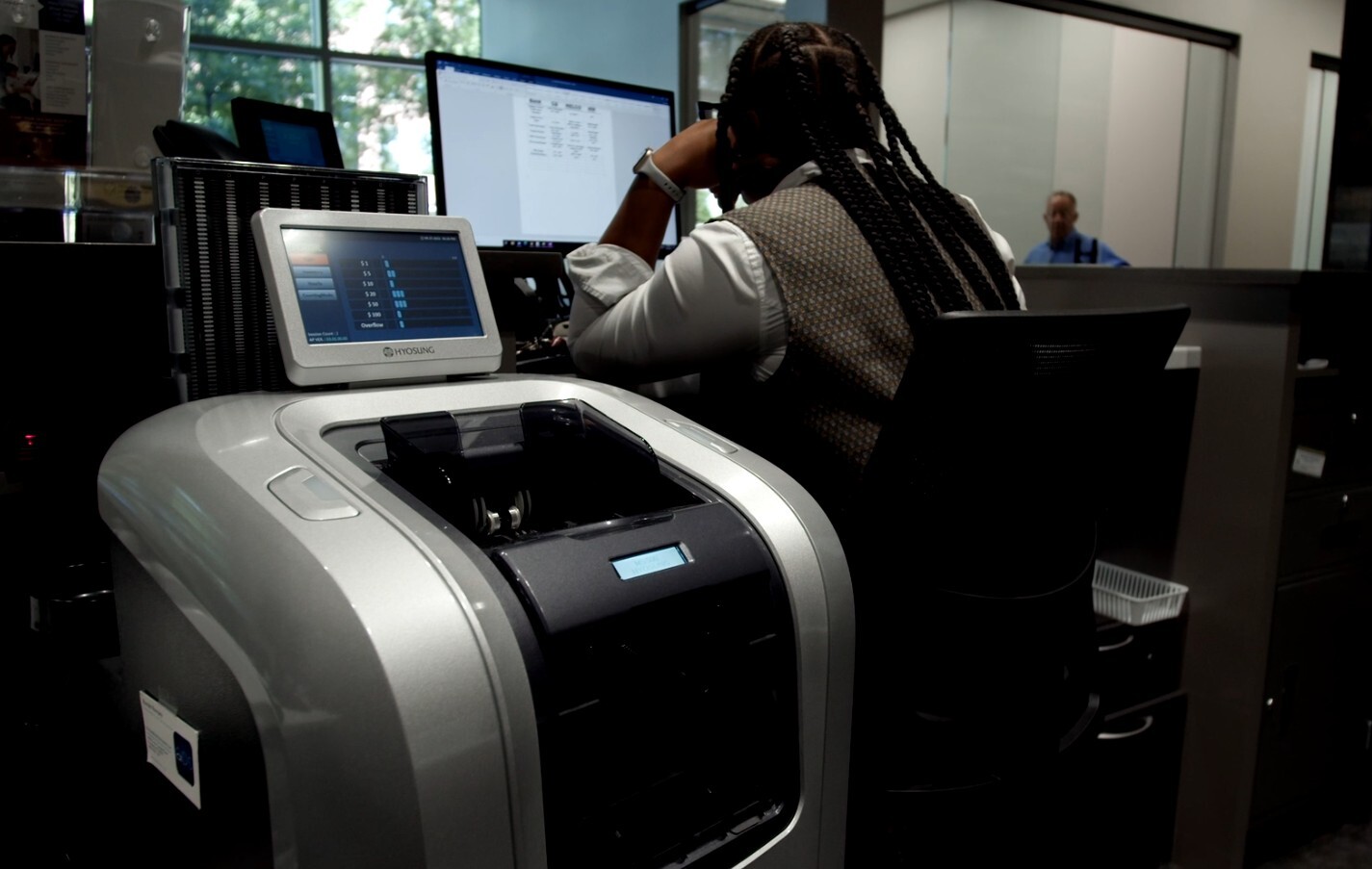
Where TCRs Fit in Your Branch Strategy
A lot of institutions come to us thinking about TCRs as a fix for teller efficiency or vault trips. Of course, they’re not wrong, but that’s just the starting point.
What a TCR really gives you is flexibility. It’s the kind of tool that doesn’t just solve today’s problem. It sets you up to operate differently… leaner, more consistent, and more adaptable. It lets you take what used to be rigid branch workflows and rebuild them around the people you already have.
When you look at your long-term strategy (universal banking, ITM adoption, branch consolidation) the TCR fits right into that plan. Not because it’s shiny, but because it helps your staff do more with less friction. And that’s the stuff that actually drives transformation.
Built for the Universal Banker Model
If you’re shifting toward a universal banker approach, your staff can’t be tethered to a cash drawer all day. They need to float. They need to flex. And they can’t be pulled off task every time there’s a cash-heavy transaction or vault request.
That’s where a TCR changes the game.
By taking care of the manual cash work (securely, accurately, and consistently) the machine gives your team room to move. They’re not stuck counting behind a counter. They’re not dependent on someone else to help with dual control. They’re operating with confidence, because they’re supported by a tool that handles the cash and frees them up to actually focus on the member or customer in front of them.
We’ve seen branches where this shift completely changes the floor. Staff move more freely between teller work, advisory conversations, and drive-thru support. And they’re not having to call for backup every time they need to balance a drawer or handle a large deposit.
If you're trying to build a branch that runs smoother with fewer people, this is one of the most practical tools you can put in place to make that happen.
Leaner Branch Models Without Sacrificing Coverage
We talk to a lot of institutions that want to reduce headcount, but not at the expense of service. They’re running tight teams, especially in drive-ups or Saturday hours, and still trying to keep compliance in check. That’s a tough balance.
This is where the TCR gives you options.
In branches that are short-staffed or operating with a skeleton crew, TCRs help you keep cash handling secure without pulling two people off the line for a vault buy. You’re not stuffing a drawer on Friday just to survive Saturday. Instead, you can preload a transit cassette, keep cash secured, and roll through peak times without blowing past drawer limits.
And it’s not just about weekends. In rural locations, where finding talent is already hard, this gives you a way to run efficiently without overloading the team you’ve got. You’re not adding pressure, you’re removing it. The machine handles the routine. Your people handle the relationship.
Aligned with Your ITM and ATM Strategy
We also get questions about how TCRs fit in when you’re investing in ITMs or expanding self-service options. And the answer is: perfectly.
TCRs live inside the branch. They’re built to support the staff that’s still interacting face-to-face with your customers. That means they’re not in competition with ITMs, they’re working alongside them. They take the transactional weight off your staff so they can focus on the advisory conversations and service moments that actually build trust and loyalty.
If you’re moving toward a model where every branch has to justify its footprint (where people are expected to do more than just count cash), this is the kind of technology that makes it possible. It doesn’t replace your strategy. It makes it work.
This Is an Operational Strategy That Moves the Needle
TCRs belong in any conversation about branch transformation because they do the work that makes change possible. They reduce friction. They stabilize cash handling. They let your team focus on service instead of logistics. And they make it easier to run a leaner, more flexible operation without sacrificing control or consistency.
When you pair that with a strong rollout strategy and real investment in your people, you build something durable. You create a workflow your staff can actually trust. You give them the tools and training to show up sharp, stay efficient, and keep customers coming back.
That’s how you move your branch model forward with confidence.
Integration and Technology: Middleware, Core Systems, and Future-Proofing
When most people start evaluating TCRs, they think about the hardware first. But one of the biggest factors in how successful your implementation will be is how that hardware talks to your teller system. That’s your integration, and it matters more than most folks realize.
We’ve been in enough branches to know what happens when this part gets overlooked. Your team runs into issues, nobody knows who’s responsible, and now you’re stuck in the middle of a finger-pointing match between your core provider and your service vendor.
That’s why we lead with integration strategy upfront, before anything gets installed.
Two Paths: Middleware or Direct Integration
Most institutions have two choices when it comes to connecting their TCR to the teller environment:
1. Middleware Integration
This is our preferred model, and for good reason. Middleware puts QDS in control of the entire environment. We handle the install. We handle the updates. And if something goes wrong, you call us, no bouncing between vendors.
Middleware:
-
Works with virtually any teller system
-
Supports advanced features like the transit cassette, self-audits, and real-time error reporting
-
Allows fast installation and rapid troubleshooting
-
Is typically more affordable for institutions installing fewer than 10 units
-
Makes it easy to switch cores down the road without re-buying the integration
2. Direct Core Integration
This is typically sold as a module from your core provider. It connects the TCR directly to your teller system, but comes with a few trade-offs.
Direct integration:
-
Can be less expensive for large-scale deployments
-
Offers tight alignment with your current teller system
-
May not support full feature sets like transit cassette functionality
-
Tends to come with vague error codes (“TCR Error”) and limited visibility into what’s actually happening
-
Requires you to re-purchase integration if you change core systems in the future
Why We Recommend Middleware (In Most Cases)
If you’re buying one, two, or even 10 TCRs, middleware gives you flexibility, speed, and control. It lets us get the units installed quickly (sometimes within a week), so your team isn’t stuck waiting for a core project timeline.
And when there’s a problem? You’re not left chasing down two vendors. We can resolve it (hardware or software) without the blame game. That saves you time. That protects your investment. And that’s how you keep your operations running clean.
Is a TCR the Right Fit for Your Financial Institution?
There’s a common misconception that TCRs are only for high-volume branches. Busy downtown locations. Places where cash is flying across the counter all day long. And yes, those are great candidates. But they’re not the only ones.
We’ve seen TCRs completely change the game in branches most people would call “quiet.”
It’s not about how much cash you're moving. It’s about how much time and staffing overhead that cash is costing you. Even if you’re only doing 10 to 15 vault transactions a day, you’re still burning two people on every single one. That’s time lost. It’s compliance exposure. And it’s energy your best people should be spending with customers (not stuck behind a vault door).
This Is a Question of Value
So, instead of asking “Is my branch busy enough for a TCR?” ask:
-
Are we still pulling two people off the line for vault access?
-
Are we feeling pressure to cover shifts or absorb turnover?
-
Do we have tellers spending more time balancing than banking?
-
Is there friction in our customer experience because staff is too focused on cash mechanics?
If any of that sounds familiar, you don’t need more people. You need smarter support for the people you already have.
What You Might Not Have Considered
Some of the most impactful TCR wins we’ve seen weren’t about speed. They were about staffing flexibility and consistency.
Think drive-up branches where you need tellers to flex between roles. Or low-traffic locations that still have dual control procedures eating hours every week. Or branches in hiring deserts where you physically can’t find the extra person your model needs.
These are real-world problems. TCRs solve them better than a lot of folks expect.
If You Can Avoid One Hire, You’ve Already Paid for the Machine
Here’s the part that clicks for most leaders. If you’re looking at your branch model and thinking, “If someone left, I don’t want to rehire that position,” you’ve already got a TCR use case.
Instead of reducing headcount, your conversation is now about reclaiming capacity. It’s about protecting your rockstar employees from burnout. And it’s about making the math work, even when the market doesn’t make it easy.
What to Ask Yourself
Want to know if now’s the right time to invest? Here are the questions we ask every client:
-
Are you turning over more tellers than you used to?
-
Are you struggling to staff all your locations fully?
-
Are your vault buys creating downtime and disrupting customer service?
-
Could you benefit from tighter compliance and audit trails?
-
Do you want to reduce dependency on institutional knowledge and create more consistency?
If you’re nodding yes to any of that, it’s probably time to take a serious look at what a TCR could do for you.
But if you’re on the fence, keep in mind that you don’t need to wait for the perfect scenario to get started. You don’t need every branch to be bursting at the seams with volume. You just need one opportunity to avoid a hire, reduce friction, or give your team some breathing room. That’s it. That’s your use case.
If you're ready to find out what that looks like in your environment, we’re here to help you figure it out, with straight talk, clear math, and zero pressure.
Choosing a TCR Partner: Why QDS
A TCR can solve a lot of problems. But the partner behind it decides whether those problems stay solved.
We’ve seen what happens when vendors disappear after the install. We've had clients tell us stories where no one picked up the phone, no one took responsibility, and no one cared enough to help them figure it out. That’s not how we work. That’s not who we are.
At QDS, we stay in the bunker with you. When things get hard, we don’t duck. We show up. Because the minute you bring us in, your problems become our problems.
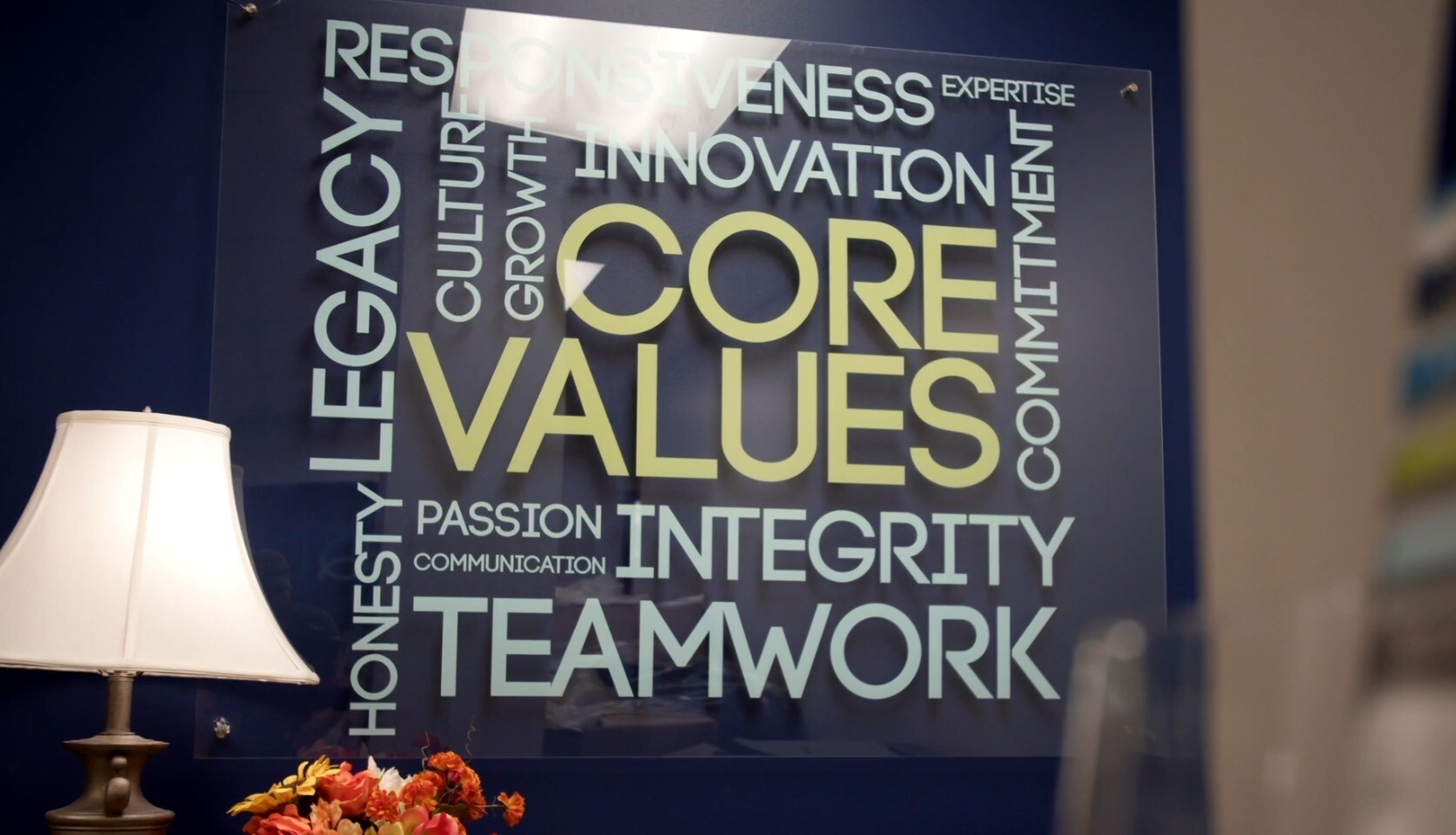
We’re Built to Support You, Not Just Sell to You
A TCR is a workflow tool. It’s not just a piece of equipment you bolt on. When we install one, we’re not just installing a machine—we’re helping you re-engineer how your branch actually runs.
That means:
-
Your onboarding is hands-on, thorough, and built around your people.
-
Your integration is handled by a team that owns the process end to end.
-
Your service calls go to people who know your environment, your goals, and your history.
You won’t be left waiting for “the other vendor” to respond. You won’t get passed around a support queue. You won’t be asked to chase down your own answers.
We’ve Taken Machines Back That Didn’t Fit, Because It Was the Right Thing to Do
We’ve had cases where we delivered something, and it turned out not to be the right fit. You know what we did? Took it back. Helped the client find something else, even if that meant buying from someone else.
Because if the solution doesn’t work for you, it doesn’t work for us. We’re not here to sell you the most expensive thing. We’re here to help you spend the right money, the way we would if we were in your seat.
The QDS Way: Showing Up, Owning Challenges, and Getting It Right
There’s a reason so many of our clients talk about how our team shows up, not just when things are working, but when they’re not.
Our support isn’t something we outsource. It’s built into who we are. Our field techs, service teams, and support reps are part of QDS. They know your environment, your machines, and what’s at stake when something goes wrong. That’s how we maintain control over the experience and deliver consistently, no matter what’s happening behind the scenes.
When a problem comes up, we don’t hand you off. We stay in it. Even if the issue touches your core provider or another vendor, we’ll jump on that call. We’ll help sort it out. Because solving it matters to us just as much as it matters to you.
But it’s not just about speed or knowledge. It’s about how our people carry themselves. We take pride in getting it right. We take ownership when we miss. And we’re always looking for ways to make the next experience better than the last.
If you’ve ever wondered whether your provider really cares, our clients will tell you: with QDS, you don’t have to wonder. You’ll feel it, every time we show up.
If You’re Thinking About TCRs, Let’s Talk
You don’t need a fully baked plan to start the conversation. If you’ve got questions about whether TCRs make sense for your branch environment, we’ll help you sort through it.
We’ve seen what works, and just as importantly, what doesn’t. We can walk through the numbers with you. Talk about how your team would interact with the machine. Help you understand what rollout and support would actually look like in your world.
And if it’s not the right fit, we’ll say so. Because the goal isn’t to sell you a machine. The goal is to help you run a stronger, more efficient, and more confident branch operation.
You know your people. We know this technology. Let’s figure it out together.
Start Your TCR Journey Today
Our team of experts is always available to begin a conversation.
